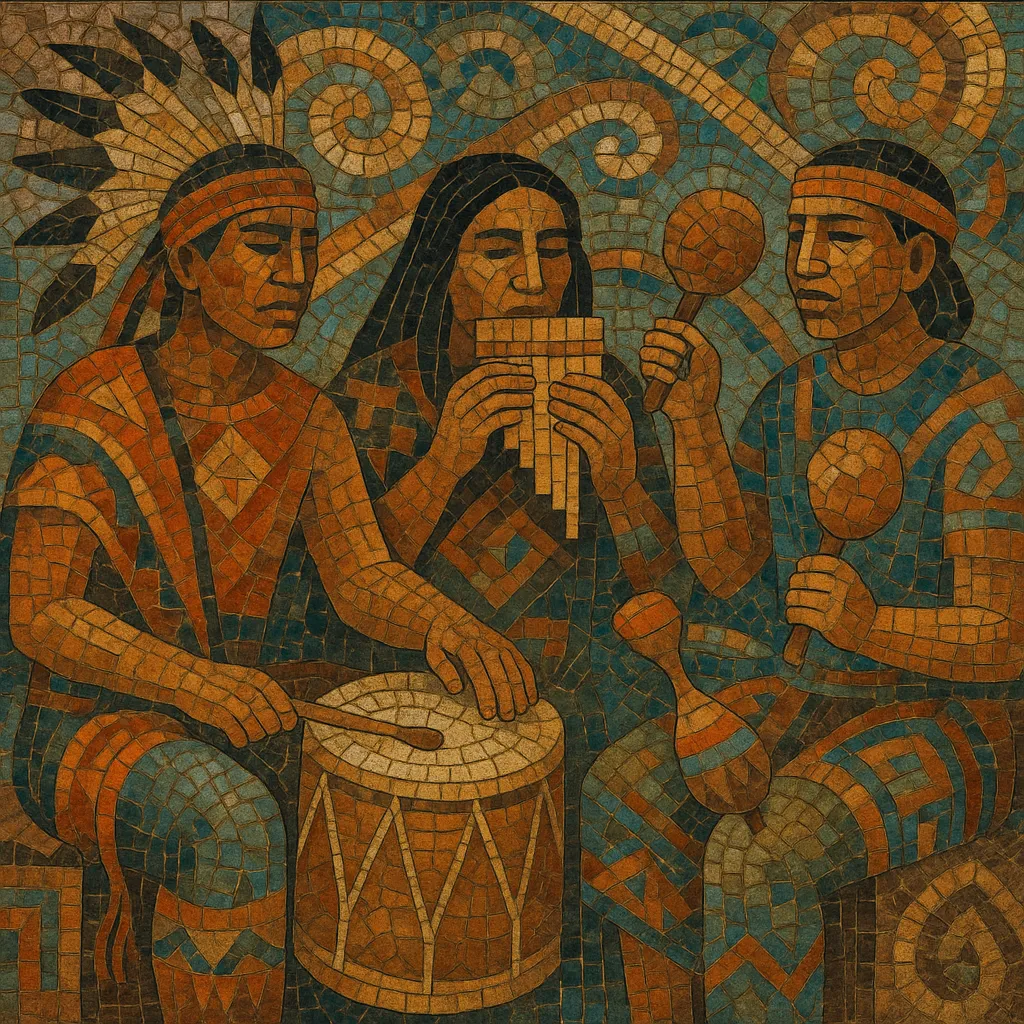
Indigenous American traditional music encompasses the ceremonial, social, and everyday musical practices of Native and Indigenous peoples throughout North, Central, and South America prior to and continuing after European contact.
It is predominantly vocal and percussion-centered, featuring solo and group singing, vocables (non-lexical syllables), call-and-response, and cyclical song forms. Common instruments include frame and powwow drums, water drums, turtle-shell and gourd rattles, clapper sticks, log drums (teponaztli), and a wide family of flutes and aerophones such as the cedar/cane flute, quena, ocarina, and Andean panpipes (siku). Melodic systems vary widely by region, often employing tetratonic, pentatonic, and heptatonic pitch sets; Plains repertories frequently have descending contours, while Andean sikuri uses interlocking hocket textures.
Music functions as living knowledge and embodied practice—tying story, language, dance, ceremony, and land. It is used for healing, prayer, rites of passage, communal celebration, diplomacy, and oral history, with stylistic diversity spanning the Arctic throat games (katajjaq), Great Basin paired-phrase songs, Pueblo ceremonial music, Plains powwow styles, Amazonian icaros, and Andean siku ensembles.
Indigenous American traditional music emerged long before written records, developing as an oral, place-based practice deeply linked to cosmology, social organization, and ecology. Songs were and remain forms of knowledge transmission—carrying origin stories, laws, land stewardship, and healing protocols.
Colonial suppression, missionization, and allotment policies sought to curtail ceremonial practices. Despite bans on dances and gatherings, musical lineages persisted underground or adapted in new syncretic forms (e.g., Native American Church peyote songs). Recording technologies in the late 19th and early 20th centuries (e.g., cylinder recordings) documented—but also often distorted—repertoires.
From the mid-20th century onward, sovereignty movements, cultural revitalization, and community-based archiving strengthened transmission. Powwows, community ceremonies, and youth ensembles flourished; Indigenous musicians engaged with both tradition and contemporary forms. Today, Indigenous American traditional music remains a living practice—performed in community contexts, taught intergenerationally, and respectfully presented on stages and in media under cultural protocols and consent.

